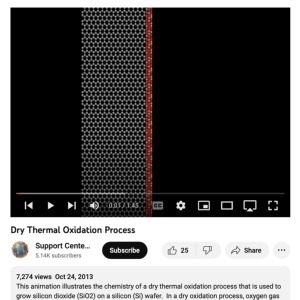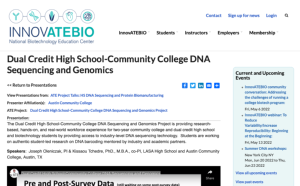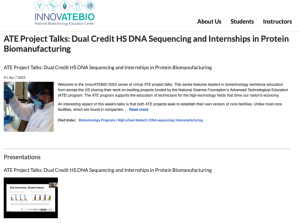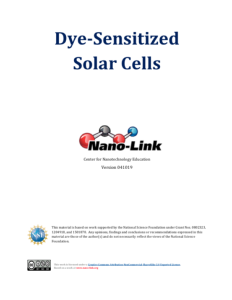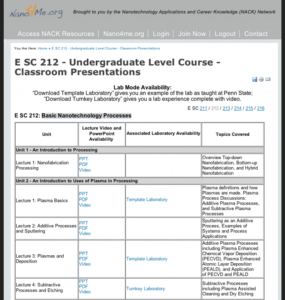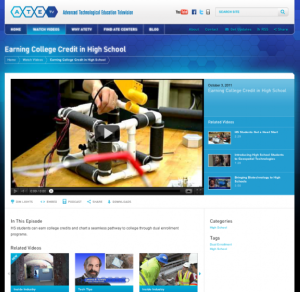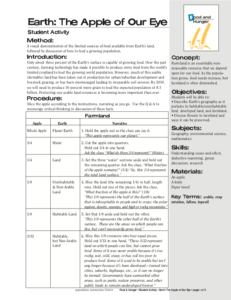Browse Resources
Resources | |
|---|---|
In this video, created by Support Center for Microsystems Education (SCME), viewers can watch an animation on the dry thermal oxidation process. This animation "illustrates the chemistry of a dry thermal oxidation process that is used to grow silicon dioxide (SiO2) on a silicon (Si) wafer. In a dry...
This interactive resource, developed by North Carolina State University and funded by the United States Department of Energy, helps interested individuals discover applicable "incentives and policies that support renewable energy and energy efficiency in the United States" and surrounding...
This video, published by InnovATEBIO, explores the Dual Credit High School-Community College DNA Sequencing and Genomics Project at Austin Community College (ACC). This project provides research-based, hands-on, and real-world biotechnology workforce experience for two-year community college and...
This resource, published by InnovATEBIO, features two presentations: one that explains the Dual Credit High School-Community College DNA Sequencing and Genomics Project at Austin Community College, followed by one on the development of a training program for protein biomanufacturing at Los Angeles...
Module Description:
This module was created by the Center for Nanotechnology Education (Nano-Link) and covers dye-sensitized solar cells (DSC). "This device is essentially a photo-electrochemical cell, which means that a photo-induced chemical reaction causes electrons to travel from one material...
This web page, from the Nanotechnology Applications and Career Knowledge Support Center (NACK Center), includes materials for the undergraduate laboratory course titled Basic Nanotechnology Processes. The following seven units are included: An Introduction to Processing, An Introduction to Uses of...
Two sequencing techniques were developed independently in the 1970s. The method developed by Fred Sanger used chemically altered 'dideoxy' bases to terminate newly synthesized DNA fragments at specific bases (either A, C, T, or G). These fragments are then size-separated, and the DNA sequence can be...
ATETV continues to produce excellent web-based videos spotlighting advanced technical careers and educational programs. This video, part of the From High School to College series, shows how high school students can earn college credits and chart a seamless pathway to college through dual enrollment...
EarthComm (Earth System Science in the Community) is an Earth science curriculum designed for use by all students in U.S. high schools. This website contains resources for teachers, students, and parents, as well as information on the goals and learning approaches EarthComm uses. In addition to the...
This 3-page resource, published in Population Connection magazine, is a student activity that demonstrates "... the limited sources of food available from Earth's land, followed by [a] discussion of how to feed a growing population." The following are the objectives of the activity: describe Earth's...
| |
| ← Previous | Next → |
